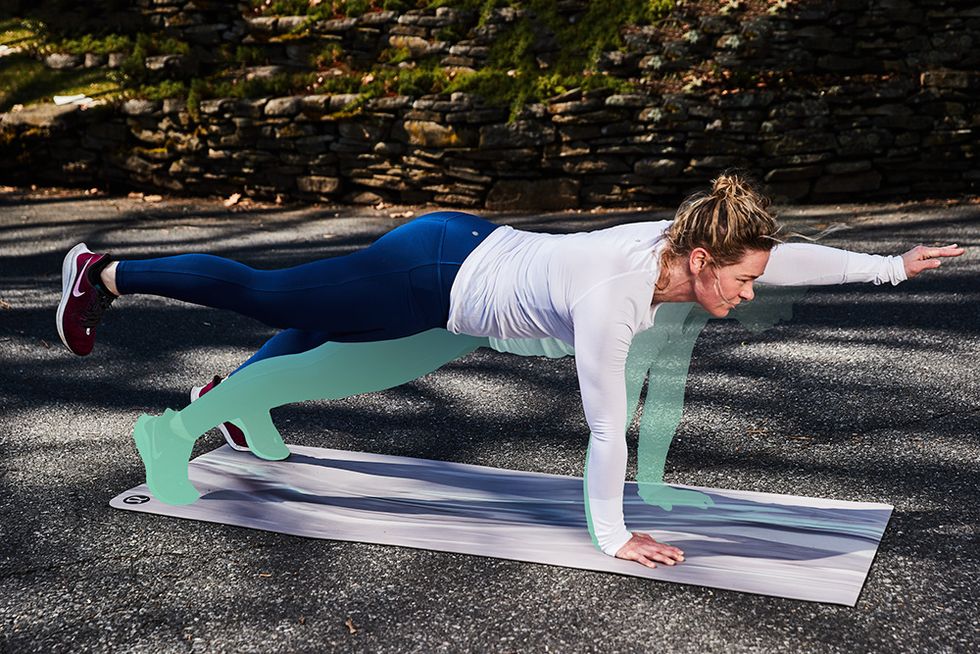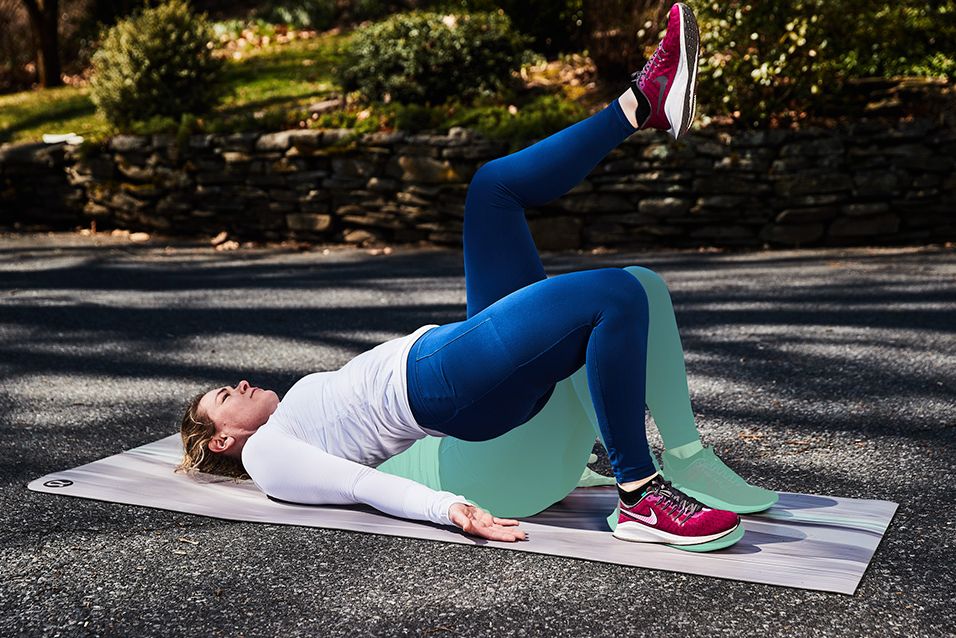有冇跑步撚入嚟吹下水 (66)嘈交要自貼PB
國務院總理李強
1001 回覆
8 Like
1 Dislike
藍嗰包有粉版? 淨係食過gel 狀
近幾年無點做運動,以前有練開5k 同interval
近期跑返5k 既時候發覺腳指尾果部分 (左右腳都係)跑到3-4k 左右會勁痛,好似痺痺地就黎抽筋咁,諗緊腳落地姿勢有問題
近期跑返5k 既時候發覺腳指尾果部分 (左右腳都係)跑到3-4k 左右會勁痛,好似痺痺地就黎抽筋咁,諗緊腳落地姿勢有問題

有
試過所有products
藍色太難食
通常會食紅gel做能量補給
金粉最勁,賽中賽後嘅回復都好有效
我會沖落寶礦力一路路一路飲
藍粉感覺上差啲
試過所有products
藍色太難食
通常會食紅gel做能量補給
金粉最勁,賽中賽後嘅回復都好有效
我會沖落寶礦力一路路一路飲
藍粉感覺上差啲
請教 超慢跑 對跑步有冇幫助?
例如 姿勢 或者長時間練 步頻會易啲提升?
係咪出街跑 好過超跑慢?
例如 姿勢 或者長時間練 步頻會易啲提升?
係咪出街跑 好過超跑慢?



得閒買包金粉試下 平時跑interval 多數食藍色
 食晒想唔再買轉買粉算
食晒想唔再買轉買粉算藍色我無乜 feel ....
留名
慢跑都係練基礎心肺
跑機定跑街都冇所謂
跑機定跑街都冇所謂

https://runningmagazine.ca/health-nutrition/running-can-help-cut-risk-of-9-different-cancers-in-men-study/
Running can help cut risk of 9 different cancers in men: study
https://bjsm.bmj.com/content/early/2023/08/17/bjsports-2022-106617
Associations between cardiorespiratory fitness in youth and the incidence of site-specific cancer in men: a cohort study with register linkage
Primary analyses were performed in 1 078 000 men, of whom 84 117 subsequently developed cancer in at least one site during a mean follow-up of 33 years. Higher CRF was linearly associated with a lower hazard ratio (HR) of developing cancer in the head and neck, oesophagus, stomach, pancreas, liver, colon, rectum, kidney and lung.
However, higher CRF predicted a higher hazard of being diagnosed with prostate cancer and malignant skin cancer.
https://runningmagazine.ca/health-nutrition/early-morning-runners-more-confident-and-more-engaged-in-daily-tasks-study-finds/
Early-morning runners more confident and more engaged in daily tasks, study finds - Early morning exercise may make your workday more productive and less exhausting
https://psycnet.apa.org/record/2023-96773-001
Running toward my challenges: Day-level effects of physical activity before work on appraisal of the upcoming workday and employee well-being
Running can help cut risk of 9 different cancers in men: study
https://bjsm.bmj.com/content/early/2023/08/17/bjsports-2022-106617
Associations between cardiorespiratory fitness in youth and the incidence of site-specific cancer in men: a cohort study with register linkage
Primary analyses were performed in 1 078 000 men, of whom 84 117 subsequently developed cancer in at least one site during a mean follow-up of 33 years. Higher CRF was linearly associated with a lower hazard ratio (HR) of developing cancer in the head and neck, oesophagus, stomach, pancreas, liver, colon, rectum, kidney and lung.
However, higher CRF predicted a higher hazard of being diagnosed with prostate cancer and malignant skin cancer.
https://runningmagazine.ca/health-nutrition/early-morning-runners-more-confident-and-more-engaged-in-daily-tasks-study-finds/
Early-morning runners more confident and more engaged in daily tasks, study finds - Early morning exercise may make your workday more productive and less exhausting
https://psycnet.apa.org/record/2023-96773-001
Running toward my challenges: Day-level effects of physical activity before work on appraisal of the upcoming workday and employee well-being

Why Cardio Recovery Rate Matters for Running and Heart Health—and How to Improve Yours
https://www.runnersworld.com/training/a44729735/cardio-recovery-rate/
If after stopping exercise, you rest completely for five to 10 minutes and notice that your heart rate hasn’t budged much from its peak, that’s a sign something concerning might be going on, says Singh. It may be as simple as the fact that you’re low on sleep, overtrained, dehydrated, or just really caffeinated. But it could signal an abnormality in your cardiovascular or autonomic nervous systems, Singh explains, which is why it’s worth flagging to your doctor.
---
Running in Hot Weather Can Cause Gut Issues—Here's How to Avoid It
https://www.runnersworld.com/training/a44775444/running-in-hot-weather-gut-issues/
Over the past decade, research has pointed to a breadth of functions affected by the beneficial bacteria in your digestive system—a collection known as the gut microbiome. Studies have linked a happy microbiome to lower risk of dementia, depression, insomnia, and even athletic performance.
Research also details how easily the microbiome can tip out of balance, due to factors like stress, poor sleep, antibiotic use, and ultra processed foods. One more to add to that list, according to a new study in the journal Temperature, is exercising in hot weather.
Looking at variables such as duration of outdoor exercise and gastrointestinal symptoms, researcher found that as core body temperature increased, so did the risk of gut damage and inflammation. Once the body reaches 102 degrees Fahrenheit, researchers concluded, it can kick off a condition called exercise-induced gastrointestinal syndrome, which can cause bacteria to leak from the gut into the bloodstream. That may lead to symptoms like nausea, vomiting, and diarrhea.
Although it’s not always possible to avoid heat and humidity—especially if they occur on a race day—there are some strategies for minimizing their influence on your gut health.
---
The 3 Best Core Exercises for Runners
1. Side Plank Leg Raise

2. Alternating Arm and Leg Plank

3. Glute Bridge March

---
How to Execute Long, Slow Distance Training for Serious Endurance Gains
https://www.runnersworld.com/training/a44684591/long-slow-distance-training/
“The goal is twofold: to increase muscular endurance and condition ourselves to be more aerobically efficient.” Running long and slow boosts your cardiovascular system, so delivering blood and oxygen to your muscles becomes less taxing on your heart and lungs.
“The long slow day doesn’t necessarily increase our race pace—it’s what helps us sustain our race pace,” says Wooten. “Ultimately, this keeps a runner from falling-off of pace as the race endures, which, consequently, leads to faster finish times.”
But remember: The main purpose of the long run is to build aerobic efficiency, and that won’t work as well if you veer into anaerobic territory. “A harder effort on the long slow day will likely take a greater physical toll and could have a negative effect on the quality of the following week’s workouts,” warns Wooten. You’ll also be more likely to hit the wall during your long run or suffer an overtraining injury.
If you prefer to gauge effort by RPE, aim for less than 5 on a scale of 1 to 10.
If you’re training by heart rate, think mid to upper zone 2—no more than 60 to 70 percent of your max heart rate—as the sweet spot you should try to settle into for your long runs.
https://www.runnersworld.com/training/a44729735/cardio-recovery-rate/
If after stopping exercise, you rest completely for five to 10 minutes and notice that your heart rate hasn’t budged much from its peak, that’s a sign something concerning might be going on, says Singh. It may be as simple as the fact that you’re low on sleep, overtrained, dehydrated, or just really caffeinated. But it could signal an abnormality in your cardiovascular or autonomic nervous systems, Singh explains, which is why it’s worth flagging to your doctor.
---
Running in Hot Weather Can Cause Gut Issues—Here's How to Avoid It
https://www.runnersworld.com/training/a44775444/running-in-hot-weather-gut-issues/
Over the past decade, research has pointed to a breadth of functions affected by the beneficial bacteria in your digestive system—a collection known as the gut microbiome. Studies have linked a happy microbiome to lower risk of dementia, depression, insomnia, and even athletic performance.
Research also details how easily the microbiome can tip out of balance, due to factors like stress, poor sleep, antibiotic use, and ultra processed foods. One more to add to that list, according to a new study in the journal Temperature, is exercising in hot weather.
Looking at variables such as duration of outdoor exercise and gastrointestinal symptoms, researcher found that as core body temperature increased, so did the risk of gut damage and inflammation. Once the body reaches 102 degrees Fahrenheit, researchers concluded, it can kick off a condition called exercise-induced gastrointestinal syndrome, which can cause bacteria to leak from the gut into the bloodstream. That may lead to symptoms like nausea, vomiting, and diarrhea.
Although it’s not always possible to avoid heat and humidity—especially if they occur on a race day—there are some strategies for minimizing their influence on your gut health.
---
The 3 Best Core Exercises for Runners
1. Side Plank Leg Raise

2. Alternating Arm and Leg Plank

3. Glute Bridge March

---
How to Execute Long, Slow Distance Training for Serious Endurance Gains
https://www.runnersworld.com/training/a44684591/long-slow-distance-training/
“The goal is twofold: to increase muscular endurance and condition ourselves to be more aerobically efficient.” Running long and slow boosts your cardiovascular system, so delivering blood and oxygen to your muscles becomes less taxing on your heart and lungs.
“The long slow day doesn’t necessarily increase our race pace—it’s what helps us sustain our race pace,” says Wooten. “Ultimately, this keeps a runner from falling-off of pace as the race endures, which, consequently, leads to faster finish times.”
But remember: The main purpose of the long run is to build aerobic efficiency, and that won’t work as well if you veer into anaerobic territory. “A harder effort on the long slow day will likely take a greater physical toll and could have a negative effect on the quality of the following week’s workouts,” warns Wooten. You’ll also be more likely to hit the wall during your long run or suffer an overtraining injury.
If you prefer to gauge effort by RPE, aim for less than 5 on a scale of 1 to 10.
If you’re training by heart rate, think mid to upper zone 2—no more than 60 to 70 percent of your max heart rate—as the sweet spot you should try to settle into for your long runs.
Can You Outrun a Bad Diet? Experts Share Their Nutrition Advice for Runners
https://www.runnersworld.com/nutrition-weight-loss/a19726348/outrunning-a-bad-diet/
People don’t feel symptoms until the disease is already quite pronounced and progressed.
Still, runners often hear mixed messages about how exercise—particularly high-intensity sessions—can erase the ills of a junk-food habit. A recent study by Christian Duval, Ph.D., a researcher in the department of exercise science at the Université du Québec à Montréal, provides the case in point: Duval fed a small group of men between the ages of 18 and 30 breakfast sandwiches, burgers, fries, dessert, and soft drinks for every meal of the day for two weeks. The subjects ate nary a vegetable, and they were consuming “an enormous amount of saturated fat, a very large amount of sugar, which is even worse than fat, and chemicals found in processed food,” says Duval. But thanks to an additional prescription of interval training, Duval’s subjects didn’t gain weight. What’s more, when he tested their blood for fat buildup and inflammatory processes—main drivers of heart disease, cancer, and other chronic diseases—it didn’t seem like the diet had any effect.
But this study, which was widely reported, was over the course of weeks, not years. The damage from a bad diet can take far longer to register. Take atherosclerosis, a disease that Baggish says festers over many years. “It’s a process that starts when we’re young, and it gradually accelerates over time. People don’t feel symptoms until the disease is already quite pronounced and progressed.”
Bottom line: You can’t outrun bad eating habits. As Baggish puts it, “Even if you exercise like a fiend, if you do other things that are unhealthy, the poor diet choices will catch up with you.”
---
Duval, C., Rouillier, M. A., Rabasa-Lhoret, R., & Karelis, A. D. (2017). High intensity exercise: Can it protect you from a fast food diet?. Nutrients, 9.
https://www.mdpi.com/2072-6643/9/9/943
---
All the Info You Need for Preventing Running Injuries
https://www.runnersworld.com/health-injuries/a20812228/how-to-prevent-common-running-injuries/
1. Add Strength to Your Weekly Schedule
2. Incorporating Plyometrics
3. Incorporate Mobility Work
4. Focus on Form
https://www.runnersworld.com/nutrition-weight-loss/a19726348/outrunning-a-bad-diet/
People don’t feel symptoms until the disease is already quite pronounced and progressed.
Still, runners often hear mixed messages about how exercise—particularly high-intensity sessions—can erase the ills of a junk-food habit. A recent study by Christian Duval, Ph.D., a researcher in the department of exercise science at the Université du Québec à Montréal, provides the case in point: Duval fed a small group of men between the ages of 18 and 30 breakfast sandwiches, burgers, fries, dessert, and soft drinks for every meal of the day for two weeks. The subjects ate nary a vegetable, and they were consuming “an enormous amount of saturated fat, a very large amount of sugar, which is even worse than fat, and chemicals found in processed food,” says Duval. But thanks to an additional prescription of interval training, Duval’s subjects didn’t gain weight. What’s more, when he tested their blood for fat buildup and inflammatory processes—main drivers of heart disease, cancer, and other chronic diseases—it didn’t seem like the diet had any effect.
But this study, which was widely reported, was over the course of weeks, not years. The damage from a bad diet can take far longer to register. Take atherosclerosis, a disease that Baggish says festers over many years. “It’s a process that starts when we’re young, and it gradually accelerates over time. People don’t feel symptoms until the disease is already quite pronounced and progressed.”
Bottom line: You can’t outrun bad eating habits. As Baggish puts it, “Even if you exercise like a fiend, if you do other things that are unhealthy, the poor diet choices will catch up with you.”
---
Duval, C., Rouillier, M. A., Rabasa-Lhoret, R., & Karelis, A. D. (2017). High intensity exercise: Can it protect you from a fast food diet?. Nutrients, 9.
https://www.mdpi.com/2072-6643/9/9/943
---
All the Info You Need for Preventing Running Injuries
https://www.runnersworld.com/health-injuries/a20812228/how-to-prevent-common-running-injuries/
1. Add Strength to Your Weekly Schedule
2. Incorporating Plyometrics
3. Incorporate Mobility Work
4. Focus on Form
近視想配太陽眼鏡跑步運動用 講問各位巴打有無推介?

睇過airfly 好似話好難配近視鏡 Oakley 又話甩coating 唔該巴打



睇過airfly 好似話好難配近視鏡 Oakley 又話甩coating 唔該巴打


唔考慮全視線?

全視線係本身普通眼鏡配鏡片?
上網睇過話普通眼鏡唔貼面 會係側邊漏光入去?

上網睇過話普通眼鏡唔貼面 會係側邊漏光入去?

就黎4張野、第一次跑到10k, 雖然成7:00 pace但好感慨,由2-3k都就收檔都捱到去10k, BMI終於合格返
未體驗過比賽想去感受下,5/10k太多選擇有無推薦 ?
?

未體驗過比賽想去感受下,5/10k太多選擇有無推薦
 ?
?我自己都係樂天訂,
真係要訂得多先有著數,
因為運費唔太平...
但有個問題,如果訂太多,
要小心個expire date....
金色60包約 8500日元
紅色gel 45包約6400日元
金粉、藍粉就唔太重,
但gel本身一包成45g重,
所以40包連包裝約2kg..
運費已經要HK$2-300..
真係要訂得多先有著數,
因為運費唔太平...
但有個問題,如果訂太多,
要小心個expire date....
金色60包約 8500日元
紅色gel 45包約6400日元
金粉、藍粉就唔太重,
但gel本身一包成45g重,
所以40包連包裝約2kg..
運費已經要HK$2-300..
中曬

想買多個背囊除左salomon有咩選擇


想買多個背囊除左salomon有咩選擇

